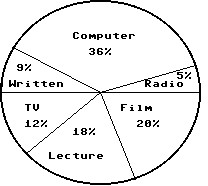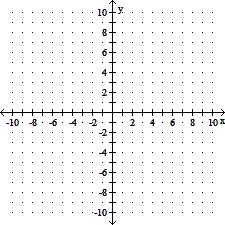Find the inverse of the function.j = {(4, 2), (2, 3), (0, 4), (-2, 5)}
A. j-1 = {(2, 4), (3, 2), (4, 0), (5, -2)}
B. j-1 = {(3, 2), (5, 0), (4, 0), (3, 4)}
C. j-1 = { ,
,  ,
,  ,
,  }
}
D. j-1 = {(3, 2), (2, 0), (4, 2), (3, 4)}
Answer: A
You might also like to view...
Solve the problem.In a school survey, students showed these preferences for instructional materials. Answer the question.  About how many students would you expect to prefer TV in a school of 400 students?
About how many students would you expect to prefer TV in a school of 400 students?
A. About 48 students B. About 12 students C. About 72 students D. About 80 students
Solve the system by graphing. If the system is inconsistent and has no solution, state this. If the system is dependent, write the form of the solution for any real number x.6x + y = 276x + y = 45
A. (24, -117) B. (18, 9) C. Inconsistent, ? D. Dependent, (x, - 6x + 27)
Find the integral. dx
dx
A.  + C
+ C
B. 7x7 + C
C. 6x5 + C
D.  + C
+ C
The rate of change of atmospheric pressure P with respect to the altitude above sea level h is proportional to the pressure. That is, 

class="wirisformula" data-wiris-created="true" src="https://sciemce.com/media/3/ppg__cognero__Chapter_12_Indefinite_Integrals__media__ede8feb5-7efd-49e7-8e6d-74c02af04db7.PNG" style="vertical-align:middle;" /> at 27,000 ft. ? A. 39.5% B. 29.9% C. 24.3% D. 26.3% E. 23.1%